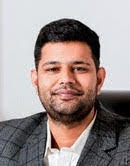Weddings are magical, but the pressure to look flawless on your big day is real. Between back-to-back functions, candid photos, and late-night dancing, your skin needs more than a DIY face mask or a new serum the week before. That’s where the expertise behind Bridal Glow Secrets: How to Get Wedding-Ready Skin with Modern Dermatology comes in, offering advanced treatments and professional care to help you achieve a radiant, camera-ready complexion.
At The Derma House, wedding-ready skin is a science-backed, strategically-timed journey. From tackling pigmentation and breakouts to achieving an even-toned, luminous glow, every treatment is customized to your unique skin needs – and your bridal timeline.
Why the 3–6 Month Mark Is Your Skincare Necessity
The key to a radiant bridal glow isn’t a last-minute miracle, it’s a planned approach that starts early. Starting your skincare journey 3 to 6 months before your wedding gives your skin time to heal, renew, and transform safely.
This window allows your dermatologist to address:
Hormonal acne or inflammation
Uneven texture and pigmentation
Fine lines and dullness
Skin sensitivity and dehydration
Undereye puffiness or darkness
Your Bridal Skincare Timeline at The Derma House
Whether your goal is a dewy finish or a filter-free glow, the extra prep time allows for multi-session treatments with minimal downtime.
6 Months to Go: Skin Assessment & Core Treatments Begin
Your skin health journey begins with a detailed skin analysis. Based on your concerns – be it breakouts, dullness or early ageing signs – your dermatologist will build a schedule that may include:
Q-switch laser for pigmentation and tanning.
Chemical peels for exfoliation and to boost cell turnover.
Medical-grade facials like HydraFacial or iS Clinical Fire & Ice.
Acne control plan for blemish-prone skin.
Treatments are spaced out at proper intervals for maximum benefit with no rush.
3 Months to Go: Skin Brightening & Texture Refinement
This is the perfect time to start advanced bridal glow treatments:
Skin boosters or mesotherapy to hydrate from within.
Microneedling with PRP to refine texture and stimulate collagen.
Under-eye rejuvenation for tired eyes or fine lines.
Laser toning for skin clarity and radiance.
These treatments create long-lasting improvements that will shine through in every makeup look and also every no-makeup pictures too.
1 Month to Go: Polishing & Prepping for the Big Day
With major concerns already tackled, it’s time to enhance and maintain. This phase is all about fine-tuning, not experimenting.
Glow facials tailored to your skin’s hydration needs.
RF – Radiofrequency therapy for that subtle lift, contoured, dewy, plump finish.
Targeted spot treatments if any last-minute blemishes appear.
Ensuring your skincare products are non-comedogenic and wedding-day safe.
1 Week to Go: Calm, Hydrate, and Glow
As the wedding approaches, stress levels rise, so should your skin’s support system.
Opt for cooling, soothing facials that reduce inflammation.
Use brightening masks for glow and to de-puff.
Stay hydrated and well-rested to lock in your glow.
This is also the perfect time for a final check-in with your dermatologist if you have back-to-back events.
Common Pre-Wedding Skincare Mistakes to Avoid
Trying new products or facials at the last minute
This can trigger unexpected breakouts or reactions.
Over-exfoliating or scrubbing aggressively
Gentle polishing under expert care is safer and more effective.
Skipping sunscreen or not removing makeup properly
Even the best treatments need sun protection to work their magic.
Bridal Glow Treatments That Are Trending at The Derma House
At The Derma House, every bride gets a custom roadmap. Here are a few in-demand treatments:
Treatment Benefits
Q-Switch Laser Evens skin tone, reduces tan and pigmentation
HydraFacial Deep hydration and exfoliation, instant glow
Skin Boosters Smooth, plump, glass-like finish
Microneedling + PRP Improves acne scars and overall skin texture
Chemical Peels Brighter, even skin tone with minimal downtime
Your Wedding Glow Is a Dermatologist Away
When your skin looks its best, your confidence follows. A curated pre-wedding skincare plan can transform your skin safely and naturally, no filters or facelifts needed. Whether your wedding is in six months or six weeks, it’s never too late to start your glow-up journey. With the right approach inspired by Bridal Glow Secrets: How to Get Wedding-Ready Skin with Modern Dermatology, you can achieve luminous, healthy skin that lasts beyond your big day. With medically proven treatments, expert care, and custom timelines, we’re here to make sure you walk into every event glowing inside and out.









